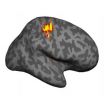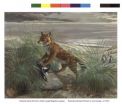Please feel free to forward to colleagues who may be interested in these articles on cellular genetics; population and evolutionary genetics; genome integrity and transmission; and genome and systems biology.
ISSUE HIGHLIGHTS
Cellular Genetics:
Systems genetics implicates cytoskeletal genes in oocyte control of cloned embryo quality, pp. 877-896
Yong Cheng, John Gaughan, Uros Midic, Zhiming Han, Cheng-Guang Liang, Bela G. Patel, and Keith E. Latham
Cloning by somatic cell nuclear transfer is a powerful technology that offers a unique means of dissecting developmental processes. This article reveals oocyte-expressed genes that support early cloned embryo development. The major category of genes encodes proteins associated with the subcortical cytoskeleton and cytoskeletal elements such as the spindle. Discovery that cytoskeleton-associated proteins are key determinants of early clone development provides new insight into the pathways that support cloning.
Population and Evolutionary Genetics:
Molecular characterization and evolution of self- incompatibility genes in Arabidopsis thaliana: The case of the Sc haplotype, pp. 985-994
Kathleen G. Dwyer, Martin T. Berger, Rimsha Ahmed, Molly K. Hritzo, Amanda A. McCulloch, Michael J. Price, Nicholas J. Serniak,Leonard T. Walsh, June B. Nasrallah, and Mikhail E. Nasrallah
The switch from cross-pollination to self-pollination in Arabidospis thaliana was accompanied by inactivation of the two S-locus "self " recognition genes that determine self-incompatibility. This article reports a structural and functional analysis of an S haplotype belonging to the one group of A. thaliana S haplotypes that had remained largely uncharacterized. The results reveal the various ways the S locus was inactivated during or after the multiple independent switches to self-fertility that occurred in A. thaliana.
Population and Evolutionary Genetics:
Detecting signatures of selection through haplotype differentiation among hierarchically structured populations, pp. 929-941
María Inés Fariello, Simon Boitard, Hugo Naya, Magali SanCristobal, and Bertrand Servin
One strategy to identify genes underlying traits influenced by adaptation is to look for genomic regions with outstanding differences between populations, typically using the FST statistic. But FST accounts neither for relatedness between populations nor for correlation between neighboring loci. These authors present a new approach that incorporates both features and show it provides increased power to detect selection events. Their approach promises a better understanding of the genetic mechanisms underlying adaptation.
Genome Integrity and Transmission:
Mutations to the piRNA pathway component aubergine enhance meiotic drive of segregation distorter in Drosophila melanogaster, pp. 771-784
Selena L. Gell and Robert A. Reenan
How Segregation Distorter (SD) in Drosophila melanogaster violates Mendel's laws by enhancing its own transmission in meiosis remains a mystery, despite 60 years of study. Gell and Reenan discovered a novel role for the Piwi-interacting RNA (piRNA) pathway in this phenomenon. The fact that defects in the piRNA pathway, which is thought to defend against transposon invasion of the germline, enhances segregation distortion of SD suggests that the piRNA pathway also suppresses this unusual selfish genetic element.
Review:
Long noncoding RNAs: Past, present, and future, pp. 651-669
Johnny T. Y. Kung, David Colognori, and Jeannie T. Lee
Long noncoding RNAs are emerging as potential key players in all aspects of biology. However, the claim that much of the genome is transcribed into a complex "regulatory machinery" is controversial. The authors frame the debate in its historical context and offer general lessons distilled from current knowledge of the functions of these RNAs, providing an incisive snapshot of this rapidly moving field.
Population and Evolutionary Genetics:
Synchronous waves of failed soft sweeps in the laboratory: Remarkably rampant clonal interference of alleles at a single locus, pp. 943-952
Ming-Chun Lee and Christopher J. Marx
From populations of microbes evolving in the laboratory to human genomic diversity, it is increasingly clear that adaptation often involves multiple beneficial alleles at the same locus that rise in frequency together as a "soft sweep". This article reports a dramatic example of this during experimental evolution of Methylobacterium, where up to 17 similar alleles were simultaneously present in a single population. Their frequencies rose and fell at different times across populations but synchronously within each population as a single wave of genotypes of nearly equivalently fit genotypes.
Genome and Systems Biology:
Modeling causality for pairs of phenotypes in system genetics, pp. 1003-1013
Elias Chaibub Neto, Aimee T. Broman, Mark P. Keller, Alan D. Attie, Bin Zhang, Jun Zhu, and Brian S. Yandell
To disentangle causal relationships among phenotypes in segregating populations, these investigators modeled causality for pairs of phenotypes. Their resulting tests enable biologists to choose for investigation a few gene pairs from a short rank-ordered list of candidates. The authors provide software tools and show their utility with yeast datasets.
Cellular Genetics:
A novel interaction between aging and ER overload in a protein conformational dementia, pp. 865-876
Angela Schipanski, Sascha Lange, Alexandra Segref, Aljona Gutschmidt, David A. Lomas, Elena Miranda, Michaela Schweizer, Thorsten Hoppe, and Markus Glatzel
This article describes a novel interaction between aging and ER overload. The authors studied a dementia disease in Caenorhabdidis elegans and mice to learn how disturbed protein homeostasis contributes to disease development. They show that induction of the unfolded protein response is critical for age-related disease progression. Their results suggest that the unfolded protein response may offer a therapeutic target for dementias.
Genome Integrity and Transmission:
Emergence of DNA polymerase ε antimutators that escape error-induced extinction in yeast, pp. 751-770
Lindsey N. Williams, Alan J. Herr, and Bradley D. Preston
Mutators accelerate microbial adaptation (and mammalian oncogenesis), but the fitness cost of increased mutation imposes pressure to reduce mutation rates. In this investigation of pathways of mutator suppression, the authors show that yeast cells defective in mismatch repair and in proofreading by the primary leading-strand DNA polymerase are inviable, but escape this error-induced extinction by acquiring antimutator alleles. These findings illustrate the inherent instability of mutators and reveal multiple mechanisms of their suppression.
INFORMATION:
ABOUT GENETICS: Since 1916, Genetics has covered high quality, original research on a range of topics bearing on inheritance, including population and evolutionary genetics, complex traits, developmental and behavioral genetics, cellular genetics, gene expression, genome integrity and transmission, and genome and systems biology. Genetics, a peer-reviewed, peer-edited journal of the Genetics Society of America is one of the world's most cited journals in genetics and heredity.
ABOUT GSA: Founded in 1931, the Genetics Society of America (GSA) is the professional membership organization for scientific researchers, educators, bioengineers, bioinformaticians and others interested in the field of genetics. Its nearly 5,000 members work to advance knowledge in the basic mechanisms of inheritance, from the molecular to the population level. GSA is dedicated to promoting research in genetics and to facilitating communication among geneticists worldwide through its conferences, including the biennial conference on Model Organisms to Human Biology, an interdisciplinary meeting on current and cutting edge topics in genetics research, as well as annual and biennial meetings that focus on the genetics of particular organisms, including C. elegans, Drosophila, fungi, mice, yeast, and zebrafish. GSA publishes Genetics, a leading journal in the field and an online, open-access journal, G3: Genes|Genomes|Genetics. For more information about GSA, please visit www.genetics-gsa.org. Also follow GSA on Facebook at facebook.com/GeneticsGSA and on Twitter @GeneticsGSA.
END



